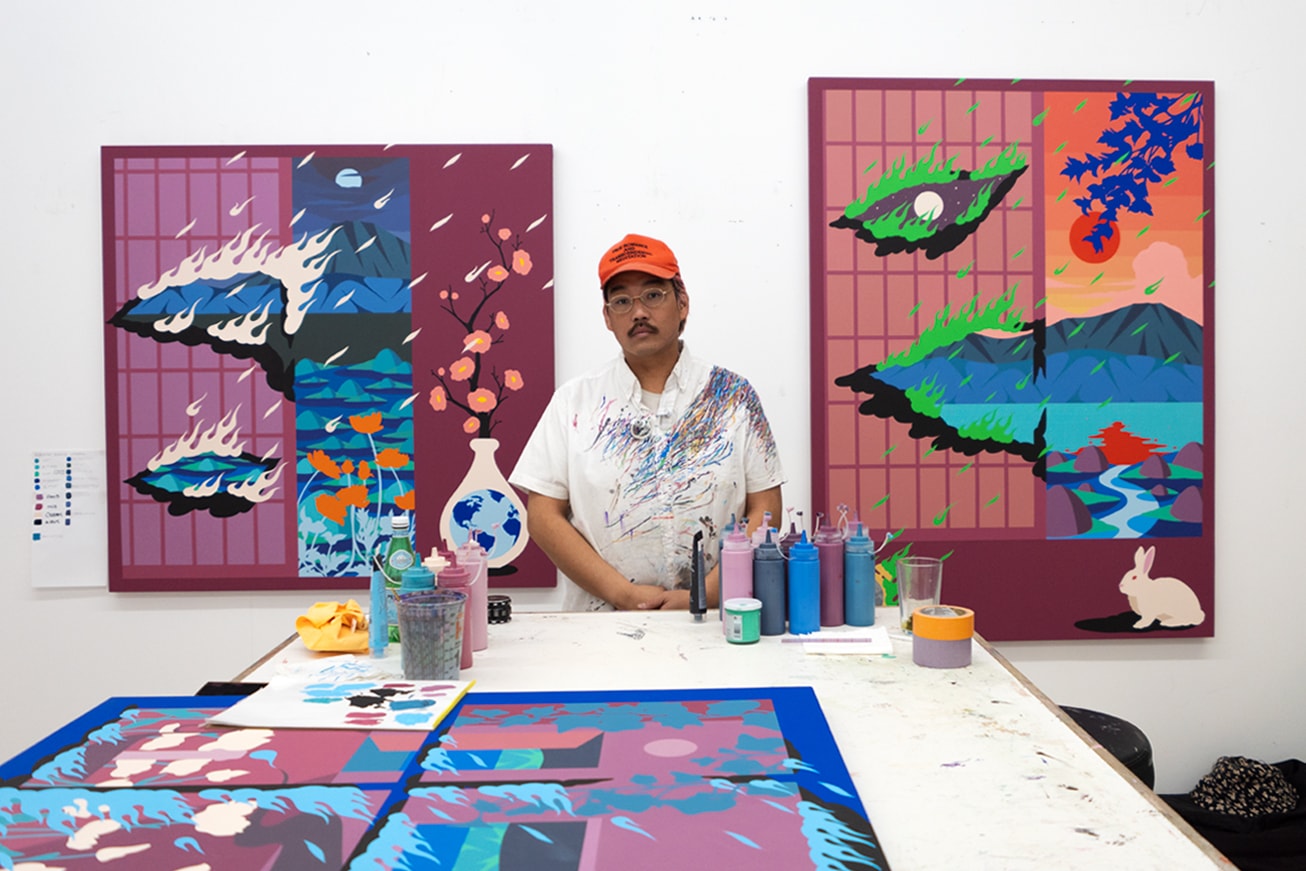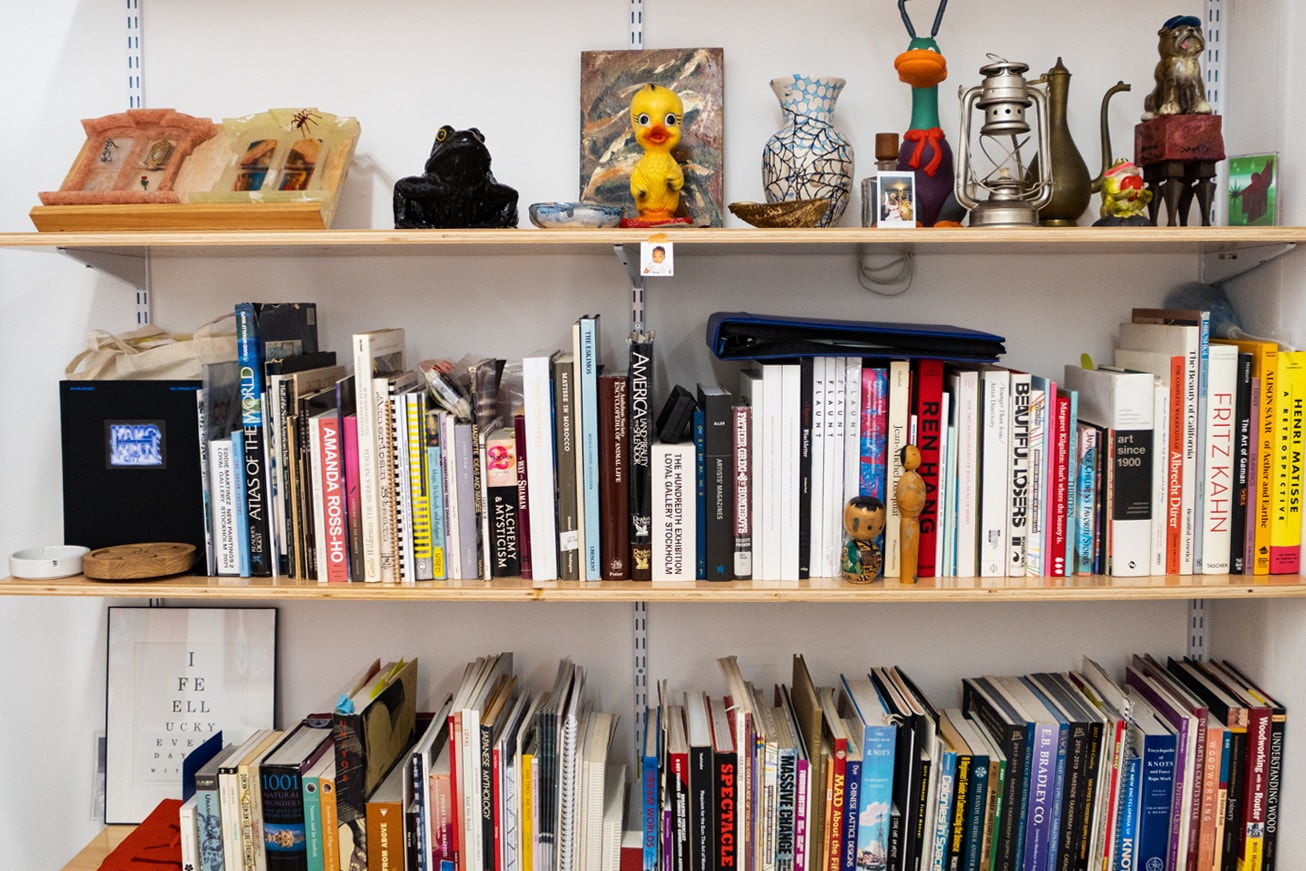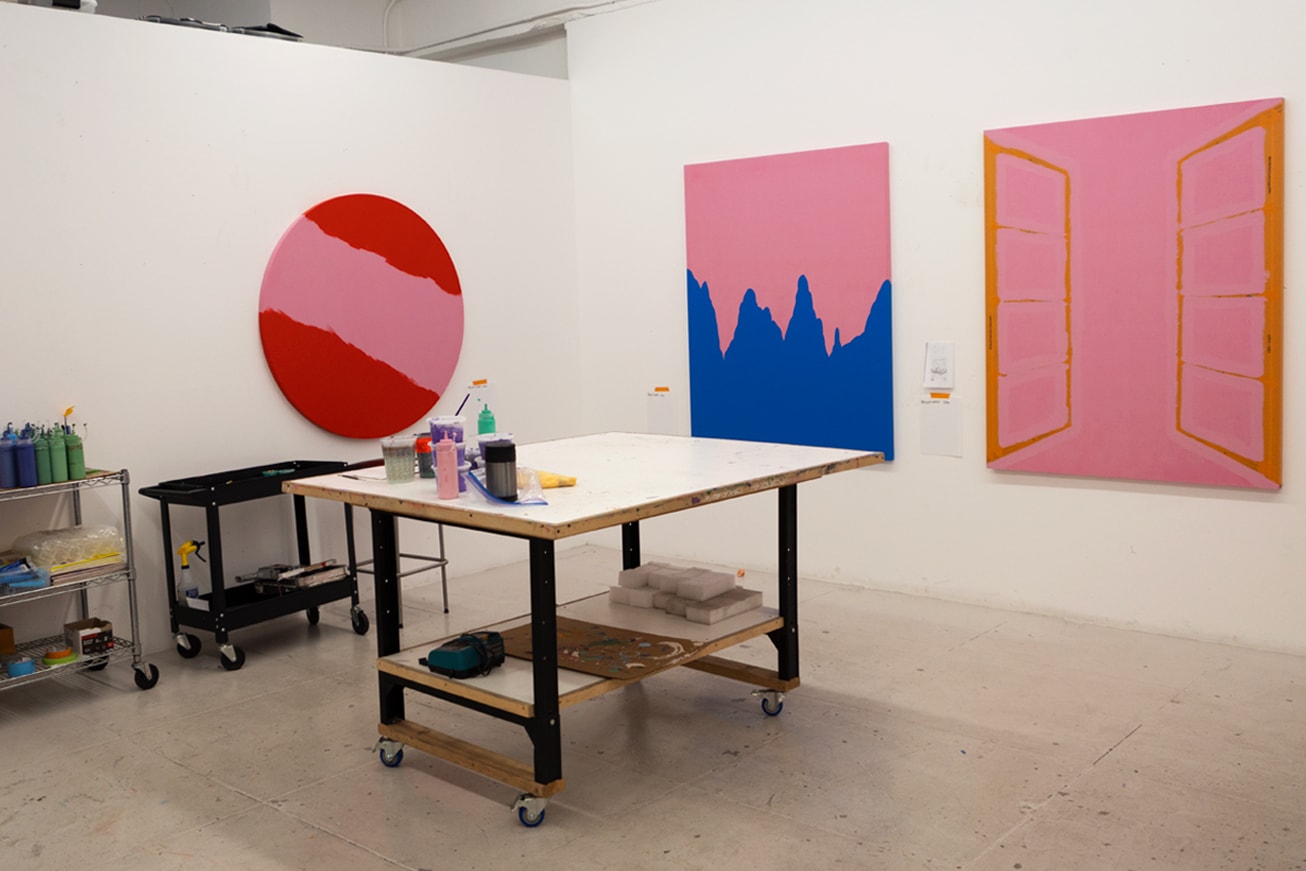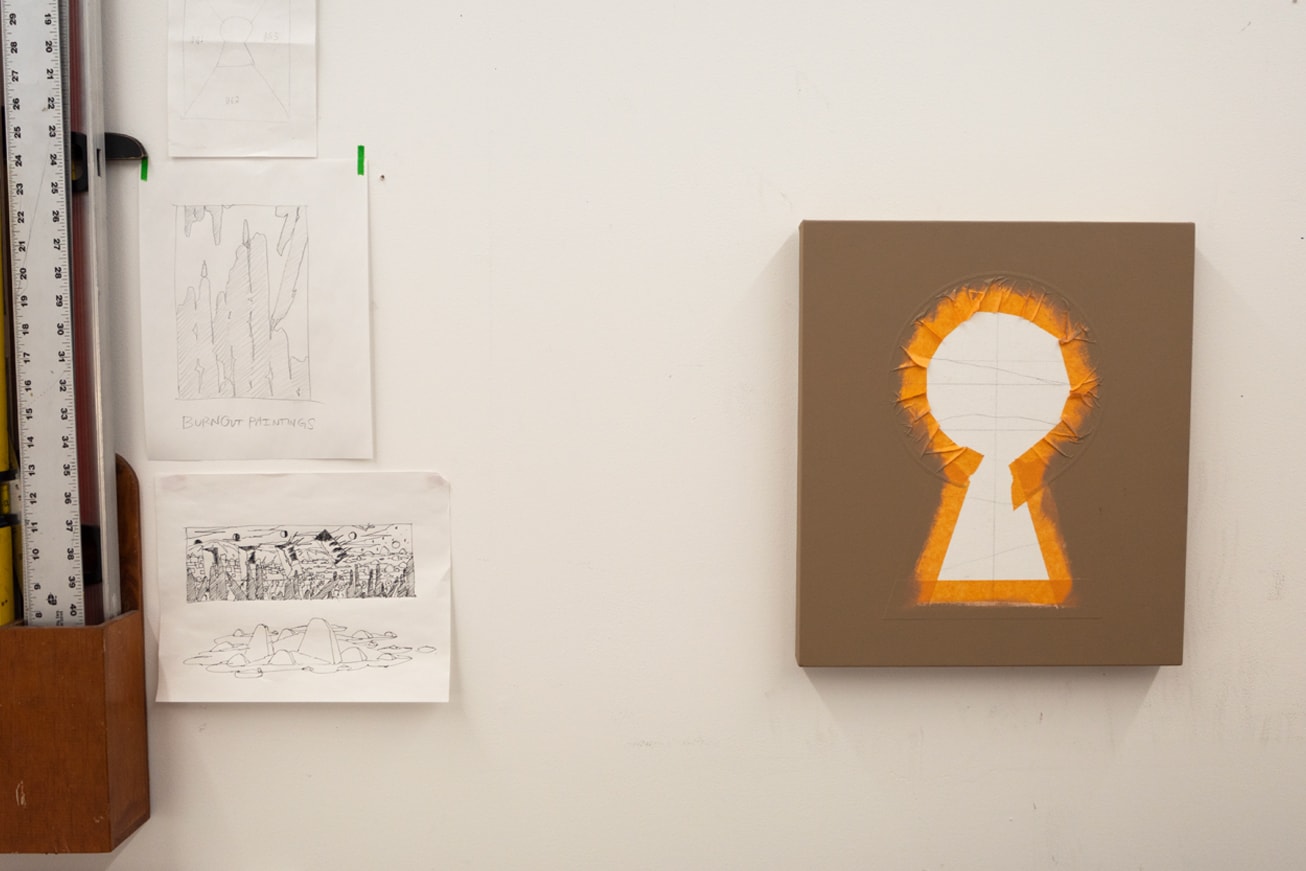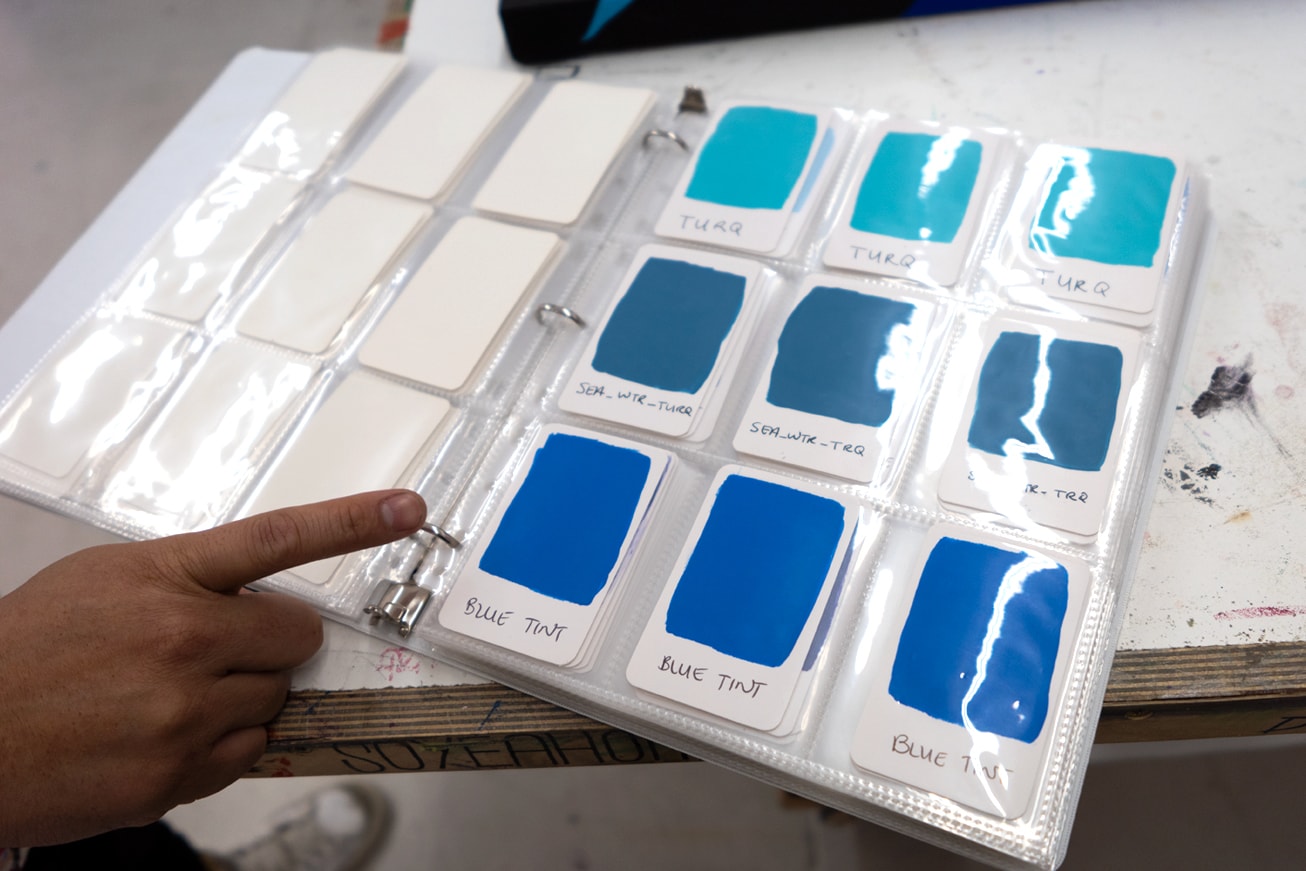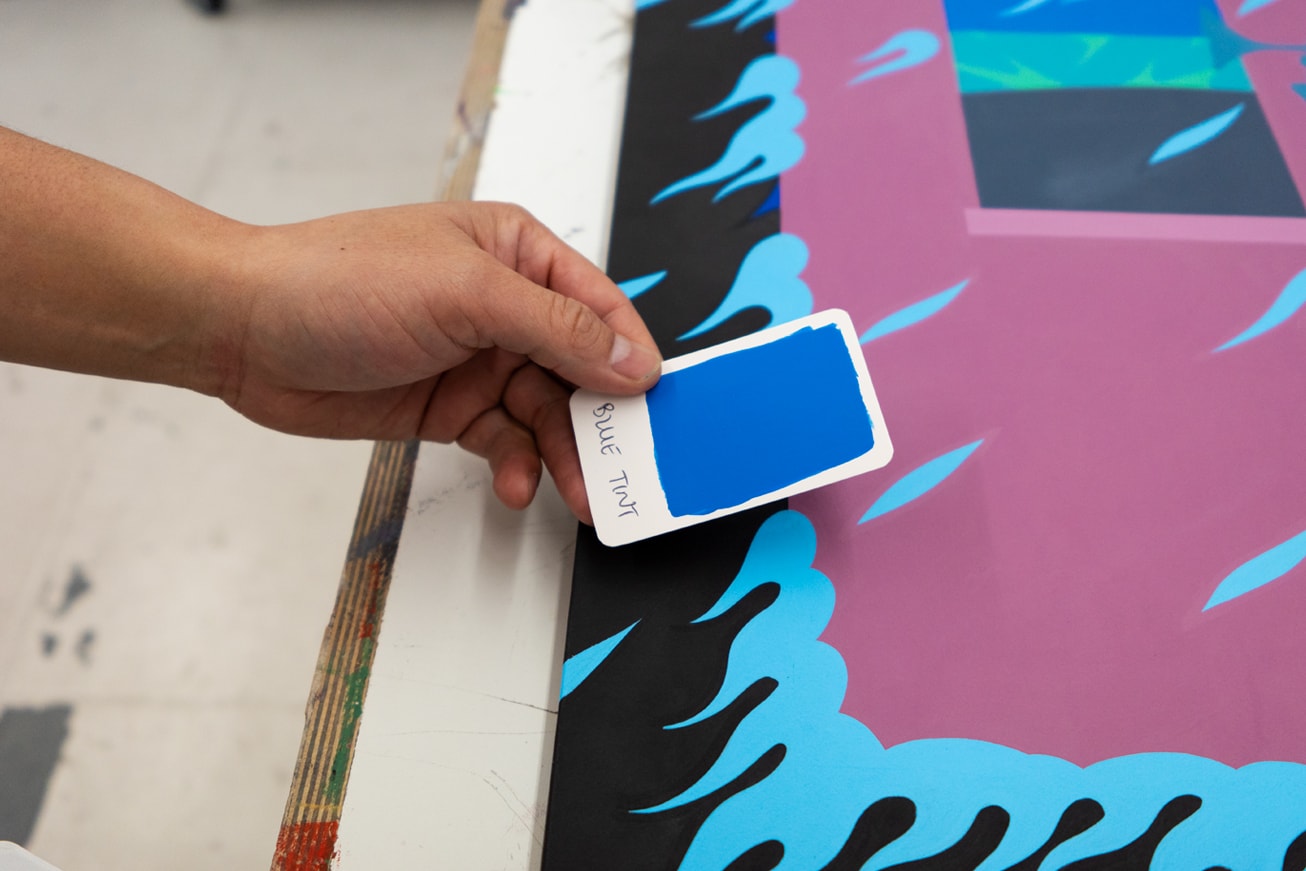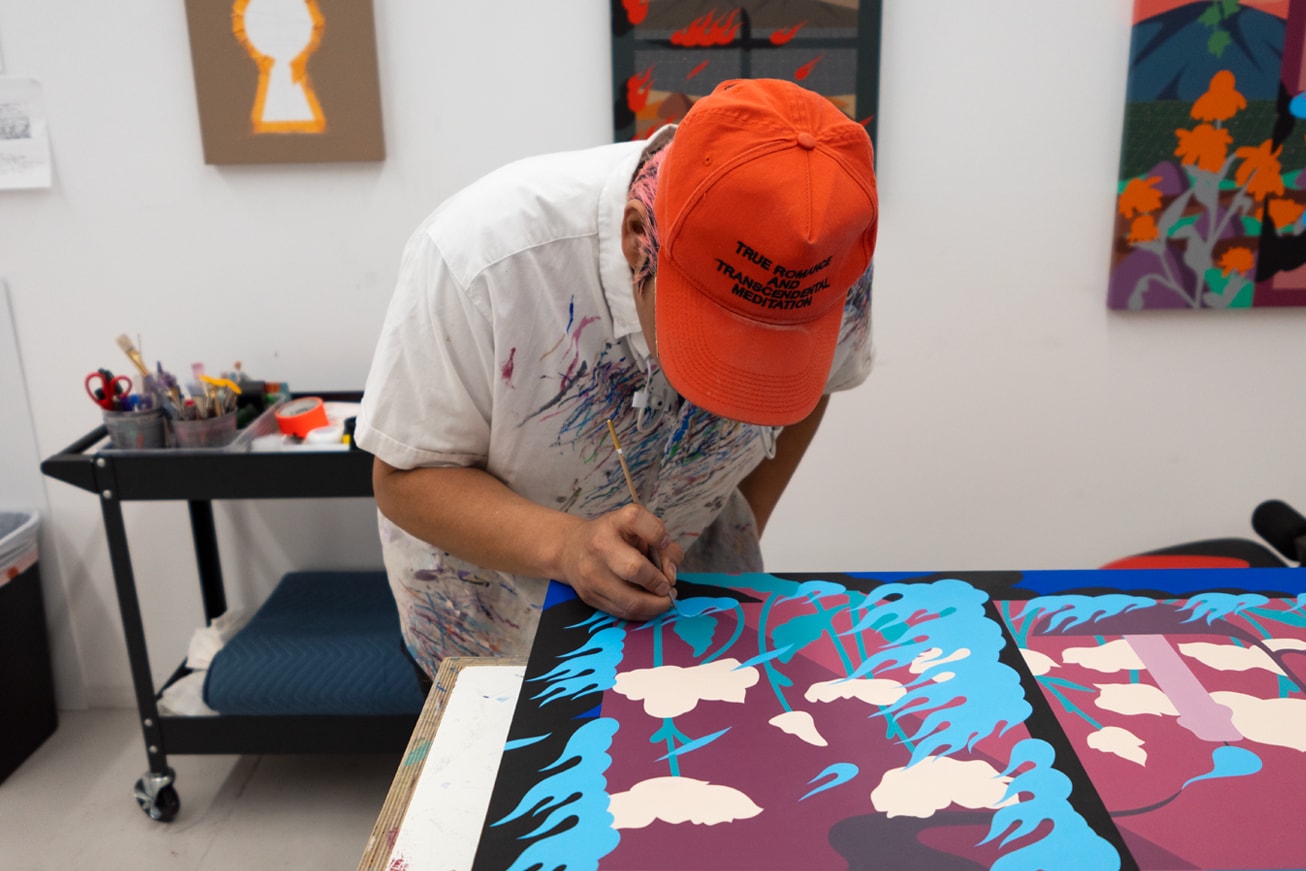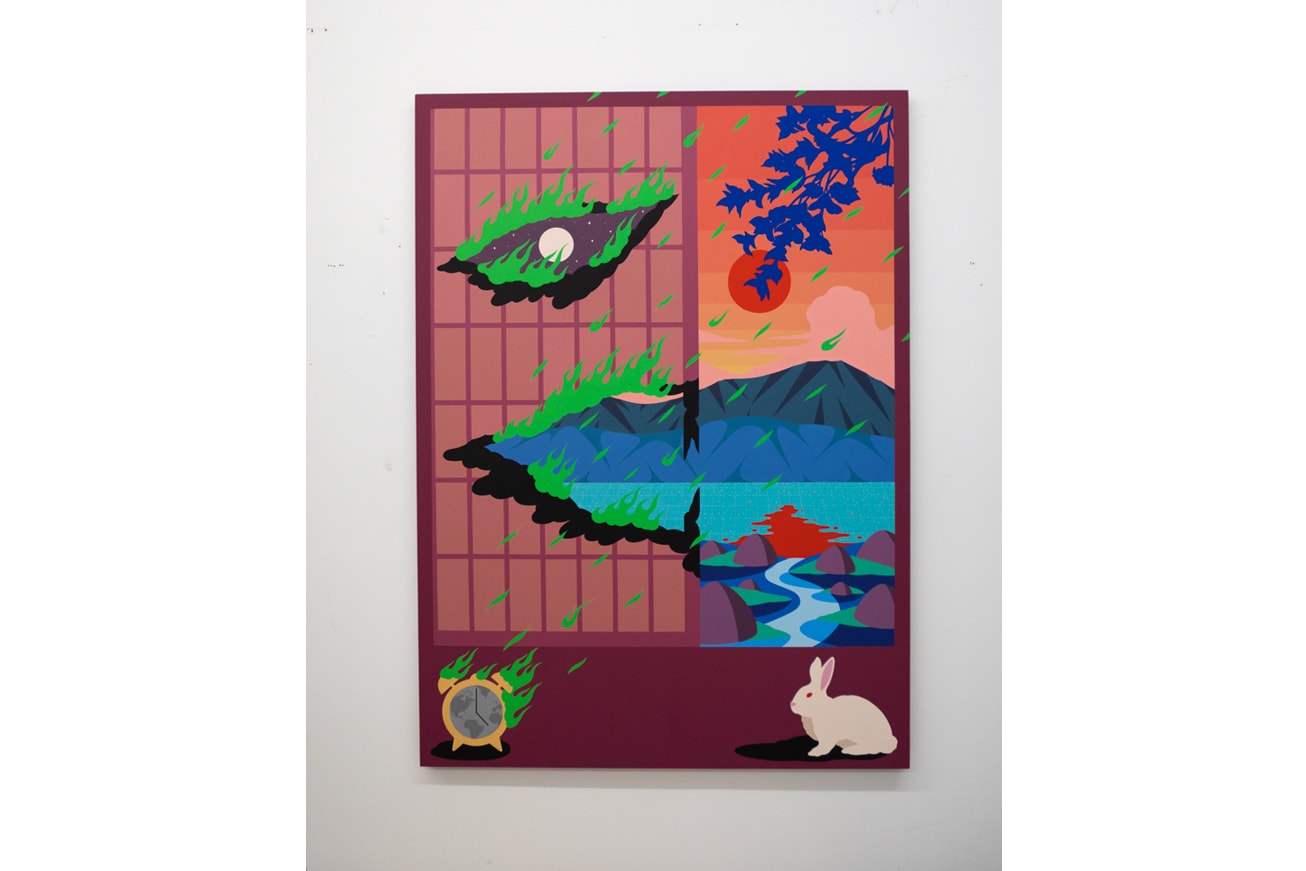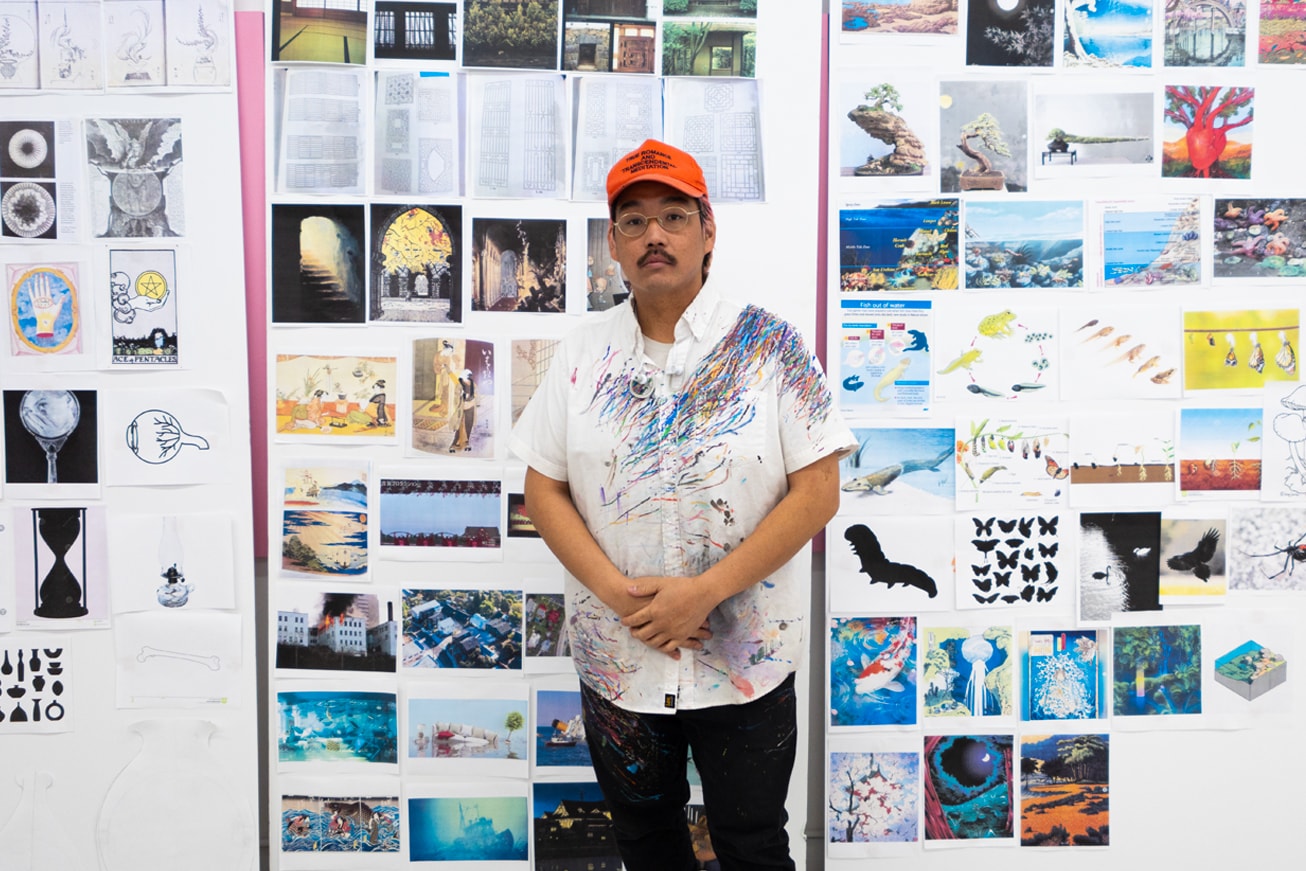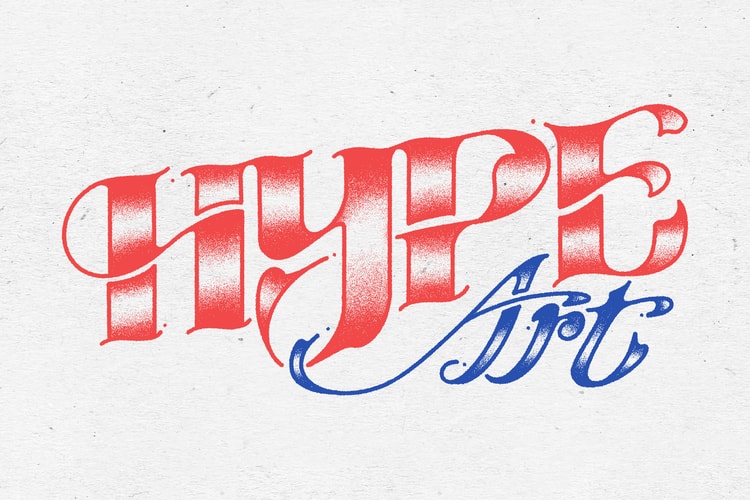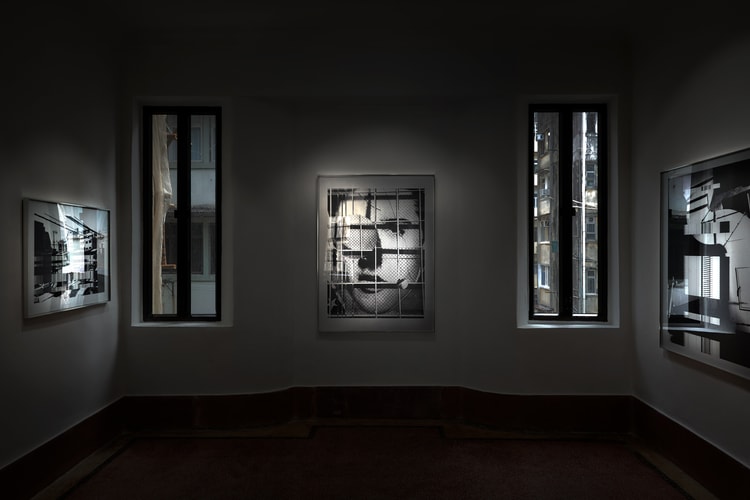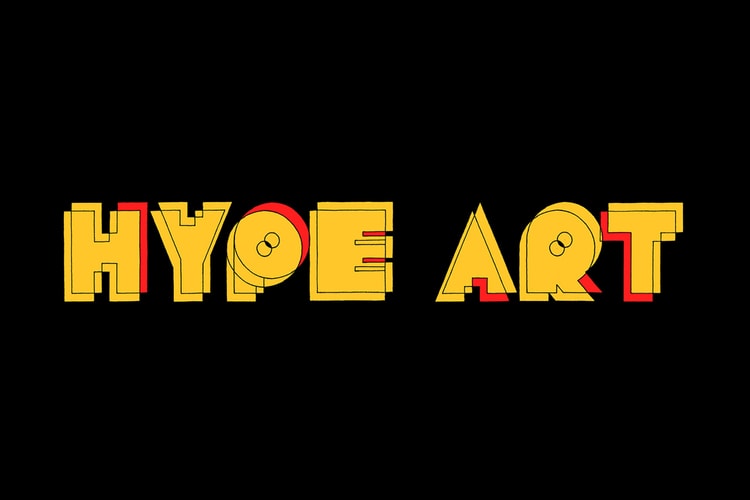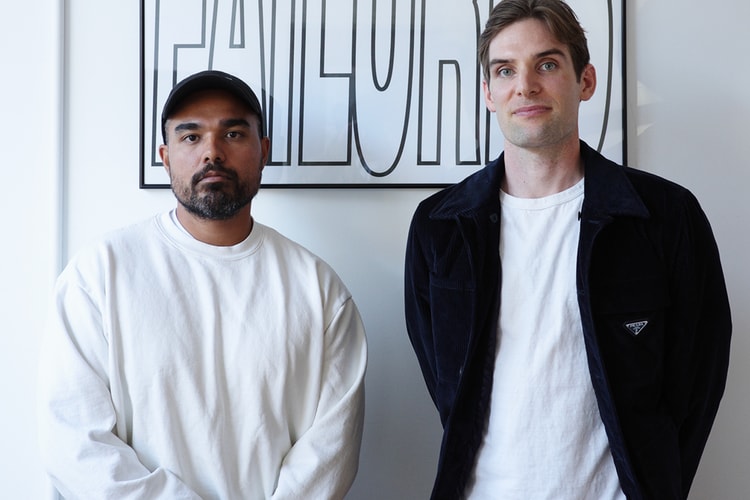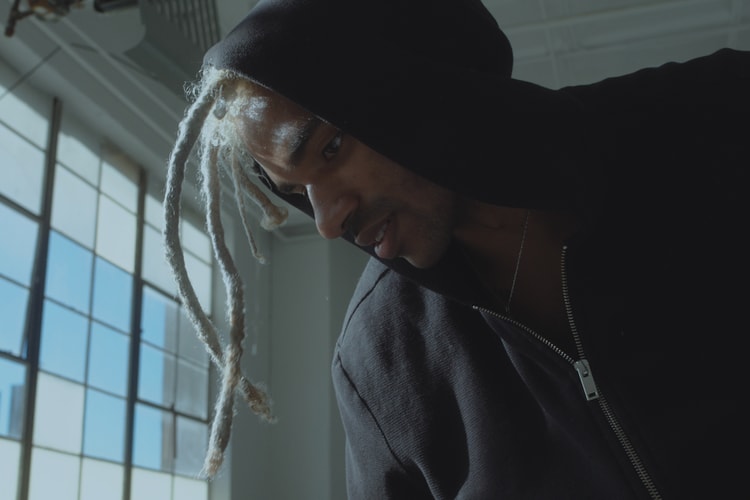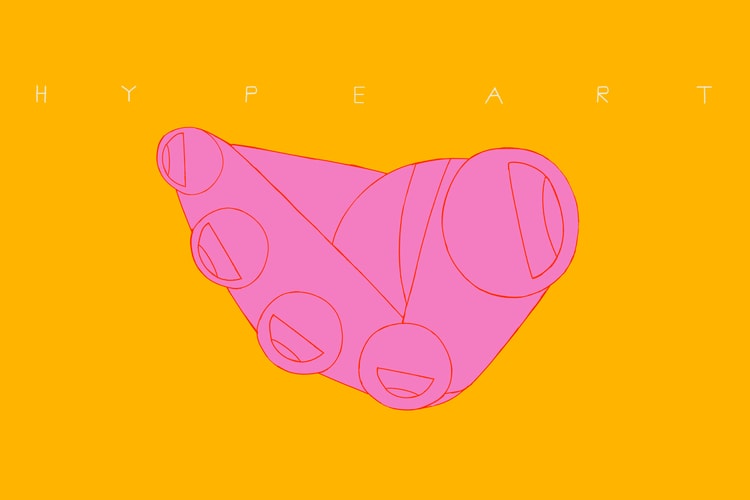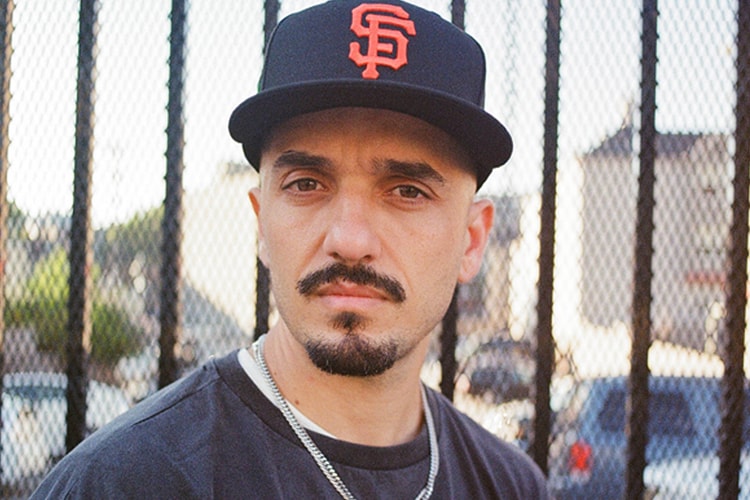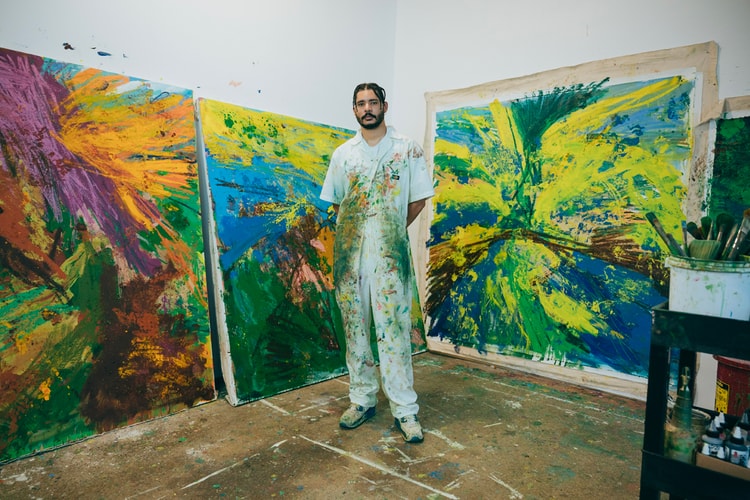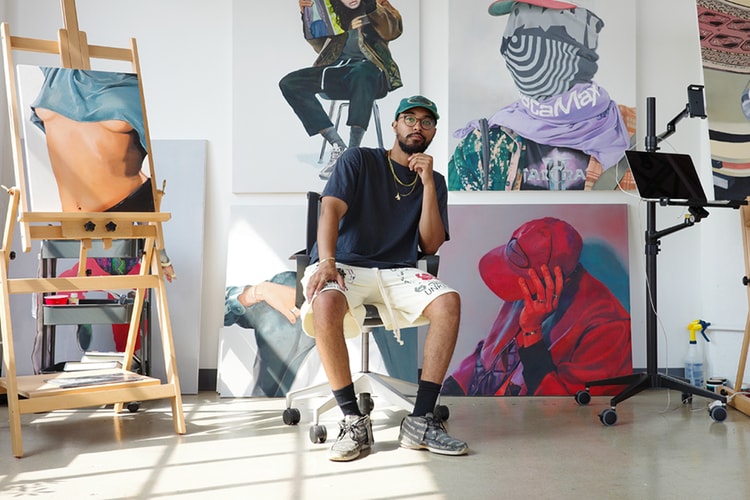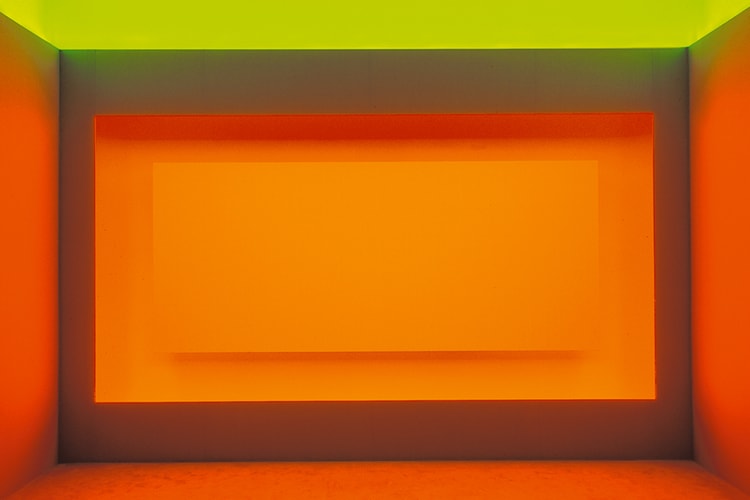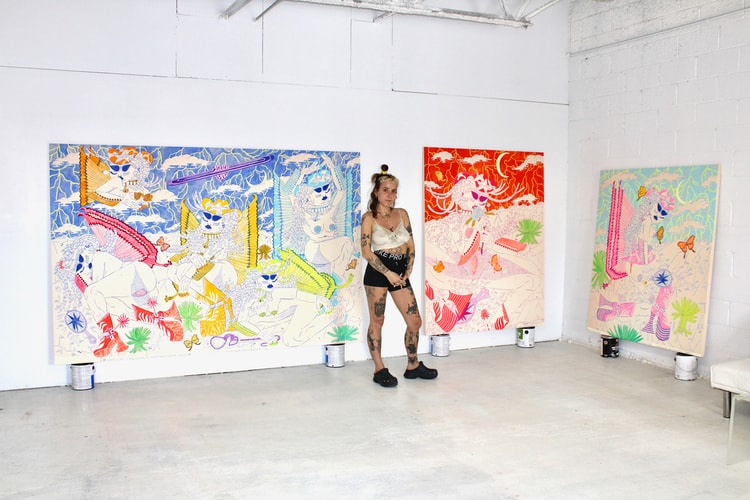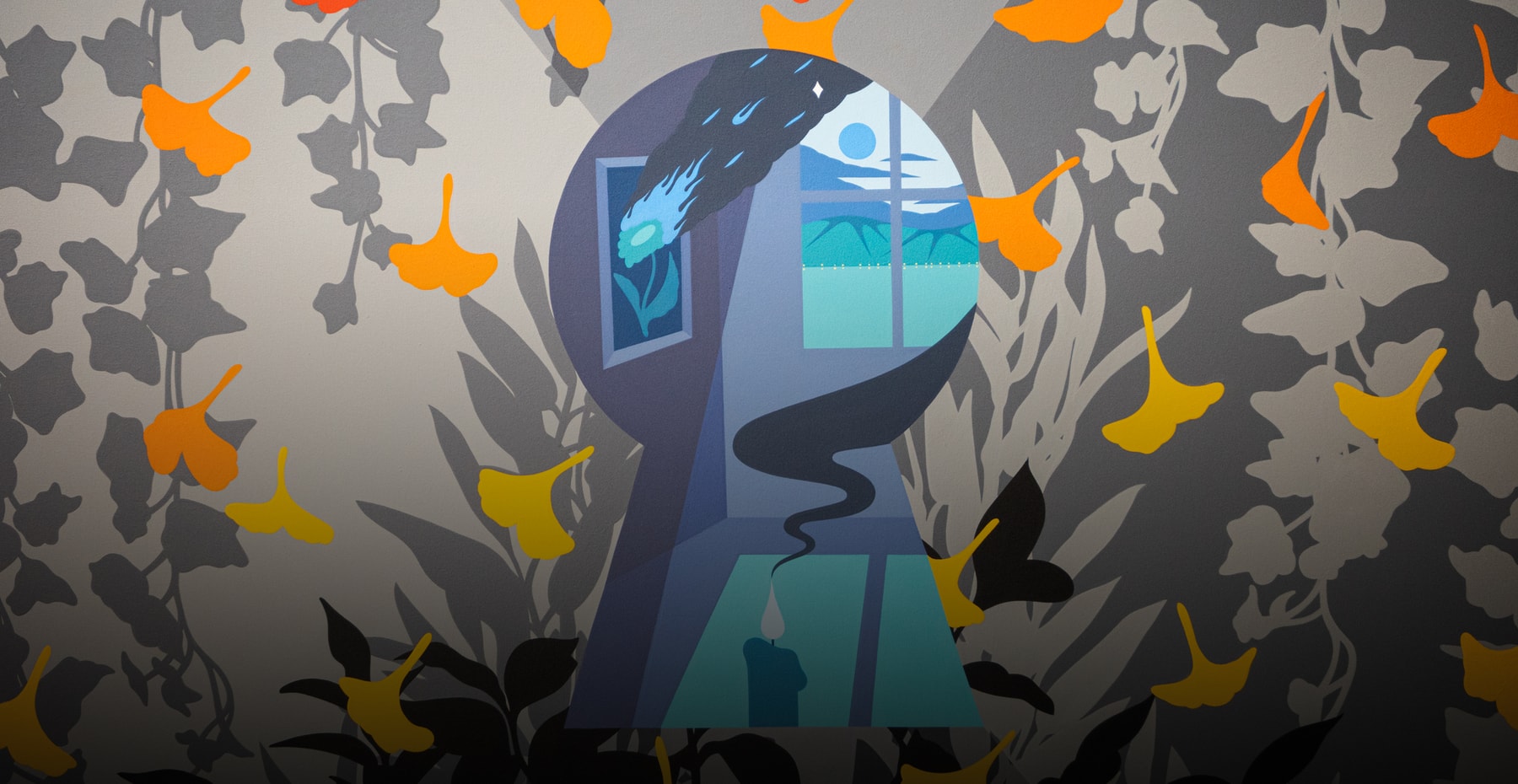

Greg Ito is a Japanese-American artist who creates vibrant paintings that serve as portals into his memories and many interests. Born and raised in West Los Angeles, Ito remembers always being surrounded by artistic relatives and began to follow his own path by receiving his BFA at the now defunct San Francisco Art Institute (SFAI).
Each of his compositions are created through a meticulous choice of symbols that are in part inspired by his Japanese heritage, his affinity to LA, and flatly laid in a rolodex of colors that the artist has archived since college. In particular, Ito often makes reference to his grandparents and great-grandparents’ internment within the Gila River War Relocation Center in Arizona during World War II. While it was a turbulent experience for his family and the larger history of the U.S., it allowed for his great-grandparents’ love to blossom and imbue the notion that light can always spring from darkness. In this way, many of the motifs are semi-autobiographical, but Ito purposefully explores universal themes to allow the viewer to step into the frame and impart their own life within the confines of the painting.
Ito, alongside his wife, Karen Galloway, are active patrons of the LA art community. As the owner and director of Sow & Tailor, a gallery in DTLA, the couple makes it a mission to equip contemporary artists with the tools to reach their full creative potential and navigate the often tricky business of art.
In lieu of his first fair appearance at Felix and Frieze LA, Hypeart caught up with Ito to speak on his physical mind-maps, the many themes he touches upon and where he envisions his art will go in the near future. Read the full interview below and let us know your thoughts in the comments.
“I’ve always been around art.”
Can you talk about your artist journey?
I was born-and-raised in West LA, near Venice. I grew up in a very Japanese-American community. Both my parents are pharmacists, so they’re on the medical side, but it’s funny, a lot of my other aunts and uncles were into art. My aunt was an animator, while my other uncle is an artist as well. His name is Peter Shire. There’s an architect in there, a graphic designer — so I’ve always been around art.
I feel like I’d always spend more time on the art projects, than the actual essays and assignments I had to do. I went to school in LA and towards the end of high school, I enrolled in an art program called CSSSA at CalArts that really opened my eyes to being able to go be an artist. ‘You could actually do that?’
That summer really fueled my dream to do art full-time. It’s really funny too, because that’s also where I met my wife at this summer art program in high school.
When was this?
2003-04. Then shortly after, I graduated high school and went to college up at SFAI, which just recently closed, but it was a private art school. I finished school in around three years and had great experiences with the professors and it was really great to be embedded in a scene. But you know, San Francisco was changing with the whole tech stuff and a lot of artists left because things were getting expensive. I ended up losing the live-work warehouse that I had, so it actually pushed me to go back to LA, which was actually great, because I felt like I hit a ceiling in San Francisco.
It was nice, it was like a clean slate. This was 2014 and I was like, ‘alright, we’re just going to focus on art.’ Running the space and doing the art publication was really distracting for me.
“As people, we’re filters for so many things.”
In terms of the art itself, you’ve stated in the past that you were heavily influenced by Mark Rothko and his massive color-field paintings. Can you describe how you approach color?
The palette I use is one continuous color story that’s broken down into a color library that I have. These are the colors I’ve been using for years and years. Some of them are from college and basically represent the full color spectrum that I use in all my work.
After we mix it, we archive it.
The neon colors almost look like old Japanese City Pop record covers from the late-1970s to ‘90s. What are your inspirations?
I’m influenced by so many different things that it’s hard to track it all. I feel like as people, we’re filters for so many things out there these days, but I actually started tracking out all the growth.
You also work with so many different artists, through the studio and Karen’s gallery Sow & Tailor. Can you speak on this influences your own artistic process?
We’re always informing each other. Having artists around and working with them on their shows definitely reflects on the things that I think about. It’s nice to stay engaged. It can be easy to be a working artist and only be focused on your own endeavors and not fold things back into the ecosystem. It’s the way to be hands-on and stimulate more community-building. That’s why it feels so good to create the compound we built. We’ve done a number of solo shows with many artists who really deserve it, who’ve now done their first solo shows, museum shows and museum acquisitions.
The gallery is growing quickly — got accepted into Armory, now Frieze and Felix. We’ve only been open for two years. My wife Karen is visiting all the artists right now to make sure they have all they need — redoing their bios; we have a staff writer who has a PhD, and she’s making sure everyone is content with their artist statements.
The studio just feels like home, it feels good.
“I like people to know that it’s all done direct from my mind to the canvas.”
Can you talk about the process of one of your paintings?
The paintings all start with a white background. This is a special paint that over the years working with this material requires maybe two or three less coats. It also gives it a bit of a warmth. They also start with a small sketch. In high school, I learned about the properties of doodling. I’m not much of a writer, so I make these doodles, which start really small and get expanded on the larger format canvas. They’re all hand drawn, nothing is laid out on the computer or projected. I like people to know that it’s all done direct from my mind to the canvas.
Instead of projecting images, like a computer image for these plants, I was really interested in doing arrangements and would set up this foam block. And I would make arrangements with flowers and then cast the shadow. The internet is really limiting. I felt like being able to actually go to the market and buy flowers, then bring them here, trim them and make my own arrangement. It’s a more pure approach.
How about the grids?
The grids are a nod to Ed Ruscha. Most of my portals before, like the screens, are all inspired by Westerns and I thought, ‘Oh, that’s interesting. I’m always doing these pane windows and it’s because it is what I grew up seeing as a fourth generation Japanese-American.’
When I think about my Japanese heritage, people always ask, ‘Do you speak Japanese? No, I don’t speak Japanese. Have you been to Japan. Not yet, I want to go.’ People always react that, ‘that’s crazy.’ Sure, it is crazy but we’ve been here a really long time. There’s this dissonance between my ancestry that I’m trying to unpack with these paintings, which these traditional screens are slowly burning away.
The gingko leaves are connected to a lot of Asian spiritualism. But for me, it’s also connected to memory because gingko blob is used to stimulate memory. So these are like memories that are lost and I’m thinking about my grandparents and great-grandparents and all the stories that dissolve as generations fold over.
“We’re still trying to understand the same things that we’ve always wanted to understand.”
From painting-to-painting, you really have your own rolodex of colors and symbols.
In this way, all the paintings throughout the years communicate with one another. A painting from 2015 or ’16 has the same red as a newer work. I like to have that lineage of colors, symbols and compositions.
I printed out all the paintings from 2021 and 2022, along with starting a record for 2023 — everything else is reference material and inspiration for where I want to see the work together.
I can see: ‘what things did I like? What things did I not like? What things did I abandon from year-to-year? How was production?’ It’s interesting to see how some of the motifs change. It’s hard, all of our archives get collapsed into these little folders on a computer that you lose track of. This way, I can track my visual tendencies within the studio — ‘what choices do I make? What symbols do I really enjoy?’
Can you talk about how you approach the theme of time within your work?
There are a lot of different motifs for time in the work — hourglasses, the sun, the moon and the earth. There’s also sunset gradients and candles. I think about time a lot, just as a human being, and as an adult now, where I’m building a family and have a daughter now. My grandmother also just turned 99-years-old — so it’s seeing that page start to get turned over — it’s something that we can’t escape. It really fascinates me that all the old art that came before us are all trying to decipher the same thing, this relationship between humans, nature and time.
Even the alchemist, before chemistry was a thing, they were trying to find how to turn any material into gold and for the elixir of eternal youth. People are still chasing that through plastic surgery and you hear about this billionaire who is trying to get younger again by like 25% — changing all his organs with younger organs. It’s really wild to me that we’re still trying to understand the same things that we’ve always wanted to understand.
I also think about my Japanese ancestry, being American and now that we’re a multicultural home and our daughter’s mix, how does she choose her future and however way she wants to reflect on her histories too, you know?
“That’s what makes life very dynamic.”
It’s interesting, because when we think about time, our conception, at least in the West, is affixed to one standardized method — which denotes the year 2023. Whereas in Iran, it is the year 1401 in the Solar Hijra calendar, 2566 BE in the Thai calendar and there are also cyclical conceptions of time in other cultures.
Yeah and it’s really about having an orientation. Stonehenge and the Mayan temples, for example, were all built specifically for certain times. They were all activated by a certain setting sun, on a certain day, on a certain year.
How about the references to the sunken ship?
A lot of what I’ve been painting has this fire motif and my first presentation at Anat Ebgi was at Frieze in 2020. In that show, there was a slight flood and at the booth wall, we painted blue and it had all these cutouts, which made it look like water was rising and everything above it was burned. So I actually burned furniture and that’s what they used for the gallery table. I was thinking, ‘how do we bring that out even more?’ Just an interior scene could be fun, where the water is actually halfway. I want to be able to push the paintings and look for new uncharted territories for the work that we can go into, while still honoring the things that we’ve been incorporating beforehand.
This year has been a big reflection year. We did a lot of cleaning and organizing. Karen has Copeland now who is our extra team member, which is really great. So with all that and the gallery, this is the ecosystem that we’re building.
It’s a really great think lab. You present a lot of dualities as well within your work, such as life and death.
Similar to time, I talk about the idea of cycles, seasons, miracles and transformative moments. I’m thinking about generational turnover, as well. My daughter’s two, my grandmother’s 99. That’s very much these kinds of familial seasons that are changing. I also like the harmonies found in contrasting elements, such as light and darkness, and how people can use them as metaphors for their own life. ‘We can get our dream job, but then one of our friends gets sick and goes to the hospital.’ We’re always faced with these triumphs and tragedies. That’s what makes life very dynamic in the way that it is — it can be extremely nourishing and beautiful, but also destructive and harmful too. So navigating that is interesting to me.
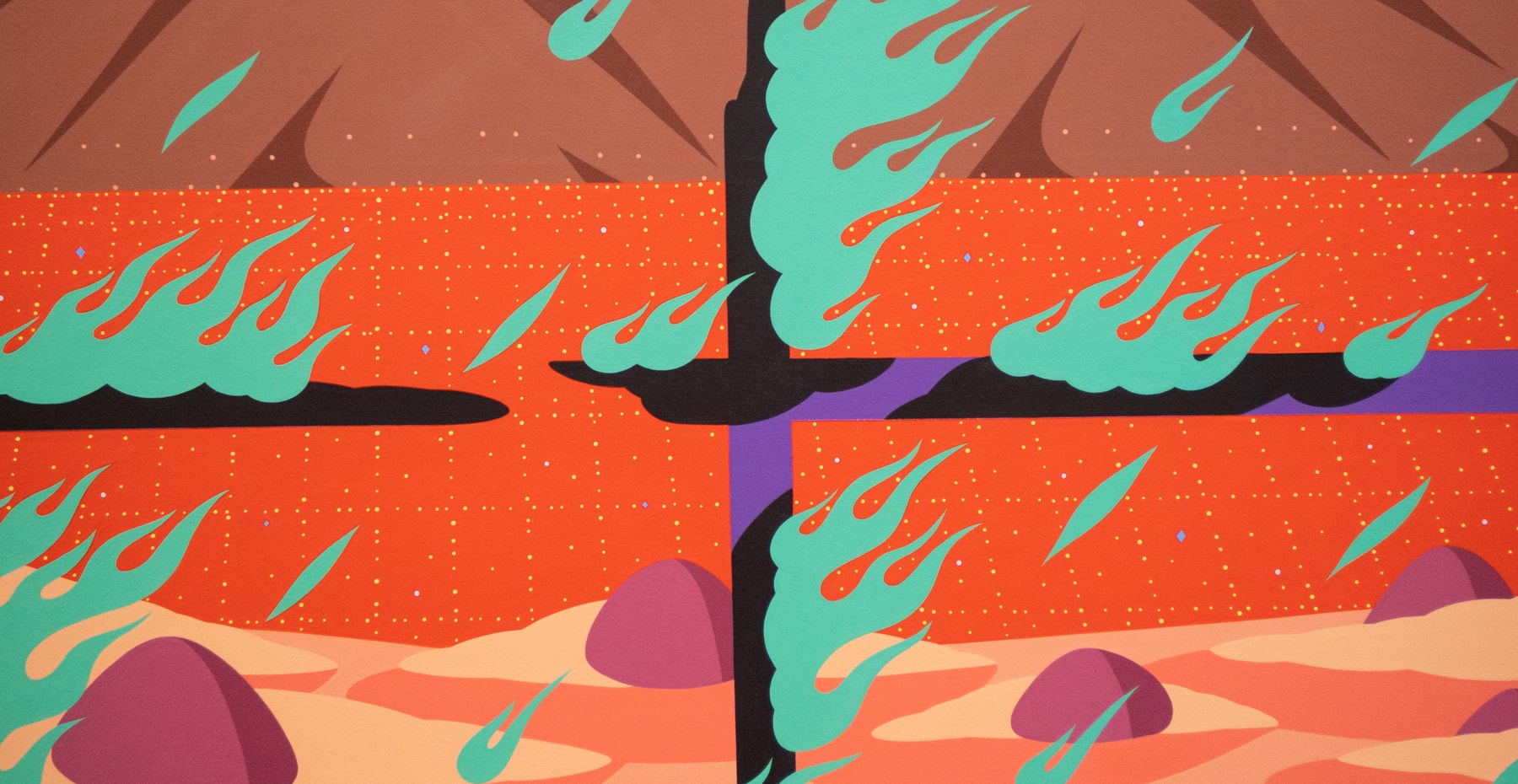
“We all have those worries in the back of our mind.”
It dismantles the ‘grass is greener’ idea, where you think by getting the dream job, it fixes everything. Life is never quite that way.
For these paintings, I want them to talk about not just what they mean to me. I’ve always felt that art needs to be accessible. You could look at a painting and have a connection or relationship with that artwork, without having to read something that deciphers what it is. I like critical academic work, but I feel you can have that and everyone can still have the agency to access an artwork.
When you look at these works, like you said, I see time, I see this balance between growth and destruction. I want people to look at that and whatever they might be going through in life, to be able to insert themselves in the work and maybe see a reflection of themselves.
We all leave the house to start our day and go do things that we want to do, go do things that we have to do, go do things we don’t want to do. But at the same time, we all have those worries in the back of our mind. We all have the burden, that smoking ember, in the back of our minds and I want to address that. We all share this and having these universal conversations in the work is extremely important.
It’s also cinematic. Would you say film is a big inspiration in the way you compose your paintings?
I’m not a big film buff, but I love movies when they’re good. That’s why I’ve always felt that film and music were some of the most successful art forms, because they can transport somebody almost immediately. You can do that with painting too, but it’s easier to look at a painting and be like, ‘next one.’ But for music, you instantly transform. That’s why my work doesn’t only live in the paintings, I make sculpture, installations and want to change the space and create an experience for people to have their minds blown.
On the same topic of set design, is that something you want to continue to explore on a larger scale?
Yeah I would love to do a fashion runway and one of my dreams is to do an opera.
Photography by Shawn Ghassemitari for Hypeart






